The shaggy bracket mushroom (Inonotus hispidus) is a unique and medicinally powerful fungus with quite a few common names depending on where you live. Some call it velvet-top fungus, ash bracket, or hispid bracket. British folks prefer “shaggy polypore” because of its hairy surface.
The shaggy bracket mushroom is widespread across North America. It is not poisonous, but it also isn’t edible because it’s so tough. This mushroom has strong medicinal properties that show lots of promise for treating cancer and diabetes and boosting the immune system.
- Scientific Name: Inonotus hispidus
- Common Names: Shaggy bracket, velvet-top fungus, ash bracket, hispid bracket, shaggy polypore
- Habitat: Hardwood trees
- Edibility: Inedible
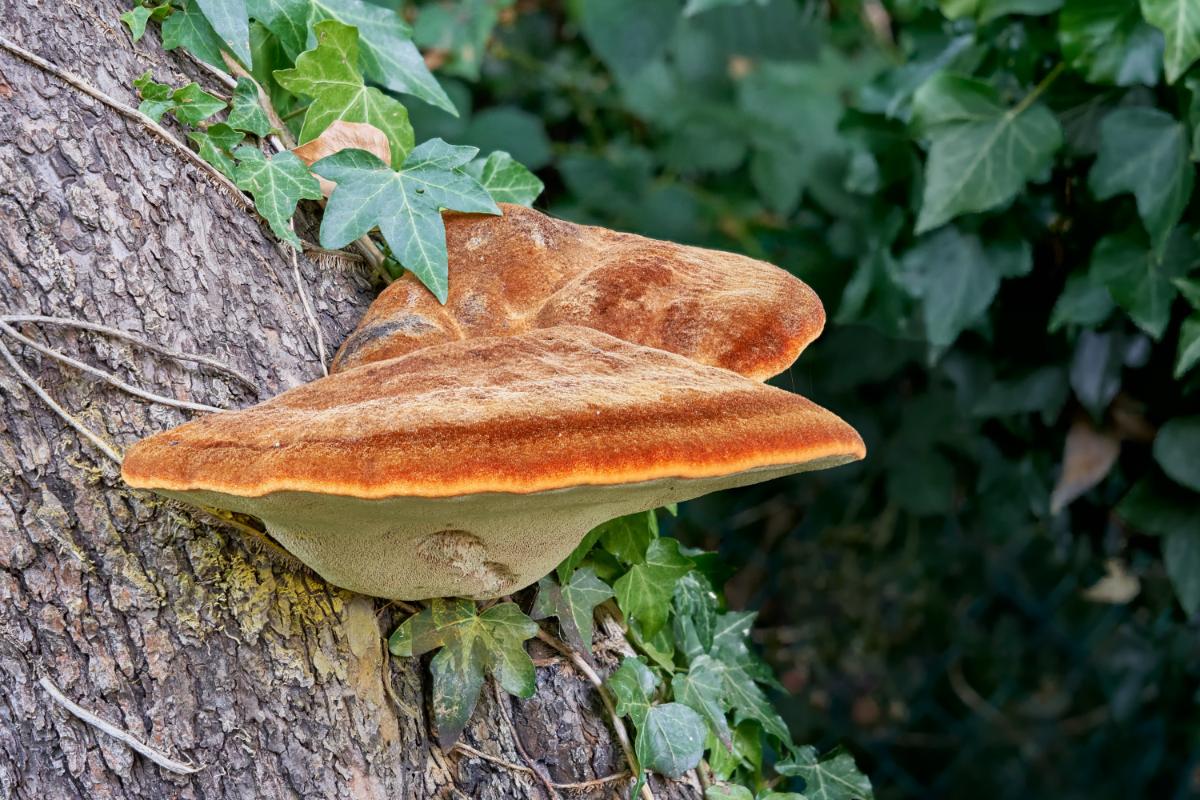
Jump to:
All About The Shaggy Bracket Mushroom
The shaggy bracket mushroom belongs to the Hymenochaetaceae family. This mushroom is a plant pathogen that commonly grows on oak and other hardwood trees throughout eastern North America.
The name of this mushroom describes its appearance. The species epithet “hispidus” in its scientific name refers to its hairy upper surface—”hispid” means bristly or covered with stiff hairs.
One of the first uses for this mushroom was for starting fires. The inside of older pieces becomes soft when dried and catches sparks easily. This made it valuable to people who needed to make fires before modern tools were available.
The shaggy bracket was used in traditional medicine, too. Folk healers from different cultures used it to make herbal remedies. They believed it could help with liver problems and digestive issues. While not as famous as other medicinal mushrooms, healers have kept it in their collection of remedies for many generations.
Farmers and foresters noticed a long time ago how this mushroom grows on ash and apple trees. They saw it mostly on old or weak trees. Today’s forest managers use this knowledge as a way to check forest health.
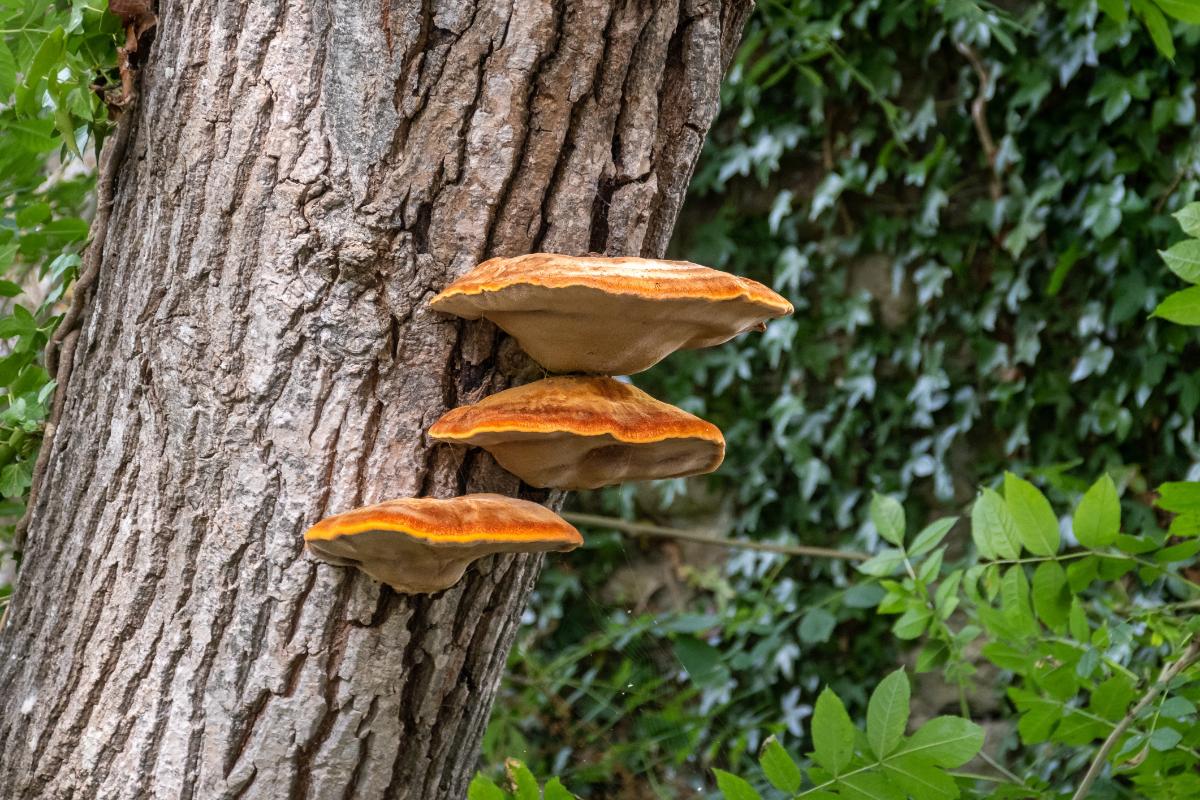
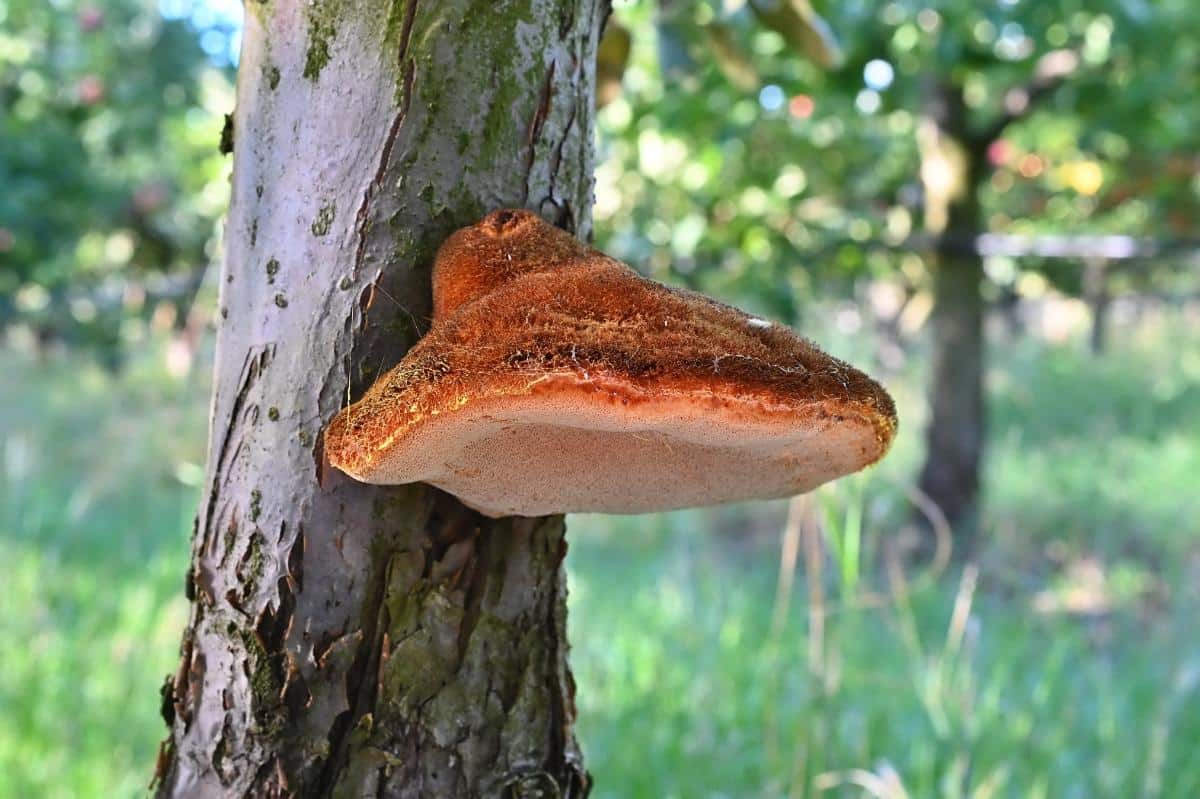
Shaggy Bracket Mushroom Identification
Season
These brackets show up from late spring through autumn. The fresh specimens emerge from May to November in most regions. Once they develop, you can spot the fruiting bodies all year round, though they dry out and break down with age.
Habitat
The shaggy bracket loves hardwood trees, especially ash, apple, walnut, and sometimes oak. This parasitic fungus feeds on living trees and continues to consume the wood ever after the tree has died. They grow on trunks or major branches. Most often, they show up where the bark has cracked, or the tree shows signs of damage.
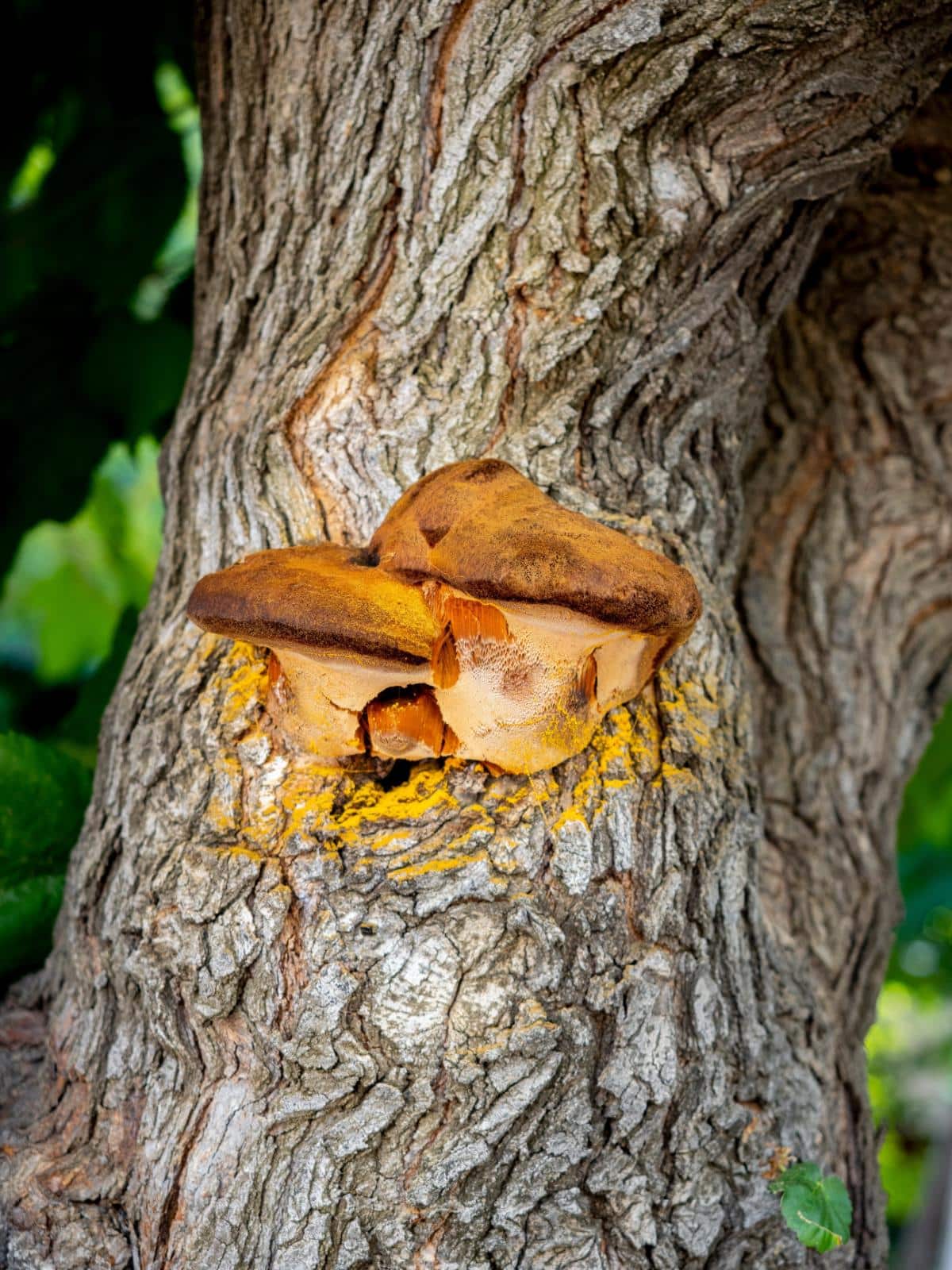
Identification
Cap
Each cap grows 4-12 inches wide and is 2-4 inches thick. The cap is semicircular or kidney-shaped. At the time it first appears, the upper surface is slightly velvety and bright orange-brown to rusty-red. The cap develops its signature shaggy texture as it ages. With age, it also changes color to deep brown or almost black after the frost hits. The cap is very dense and thick, especially as it ages.
Pores
The pores start out pale yellow to olive-brown and darken with age. Young specimens of the shaggy bracket have a velvety pore surface. The young pores might release yellowish droplets in humid weather.
Stem
The shaggy bracket doesn’t grow a true stem like other mushrooms. It attaches right to the tree. It has a wide base that forms a shelf-like projection from the trunk.
Taste and Smell
The shaggy bracket mushroom has a light fruity aroma, which is more noticeable when the mushroom is young. Many times, it doesn’t have a distinctive smell. The taste is acidic.
Flesh Color and Staining
The flesh is a rusty-brown to cinnamon color. It starts out spongy and becomes corky over time. The flesh might release a yellowish liquid that stains your hands if you cut into it.
Spore Print
The spore print is brown.
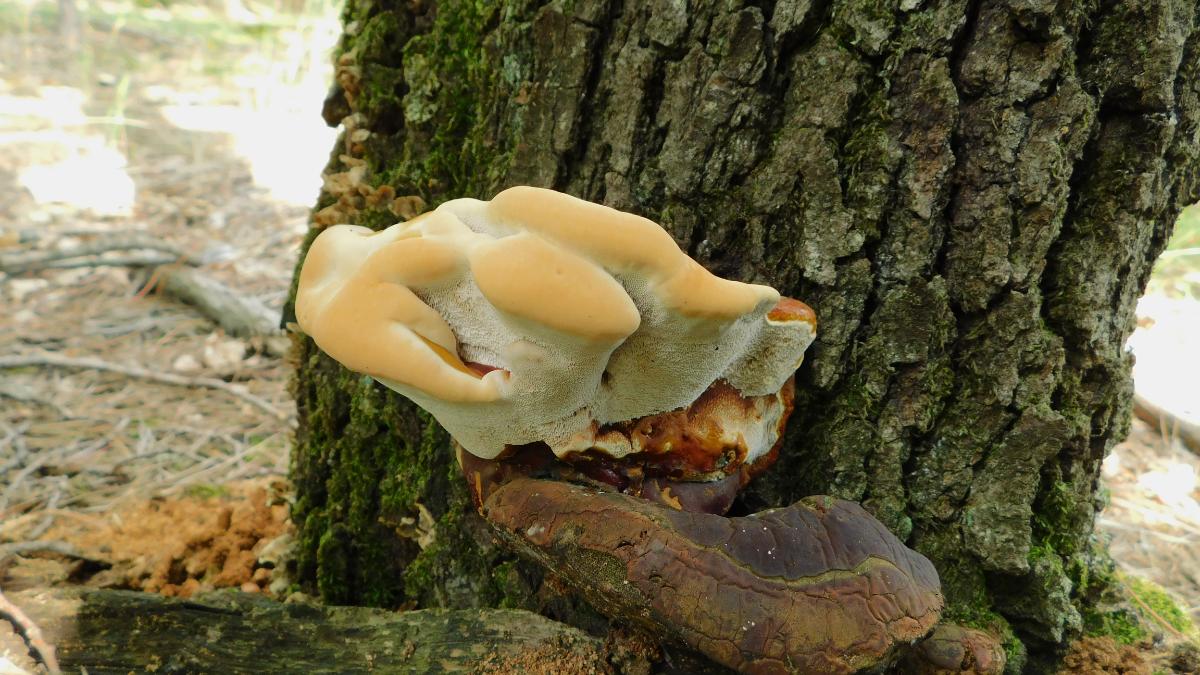
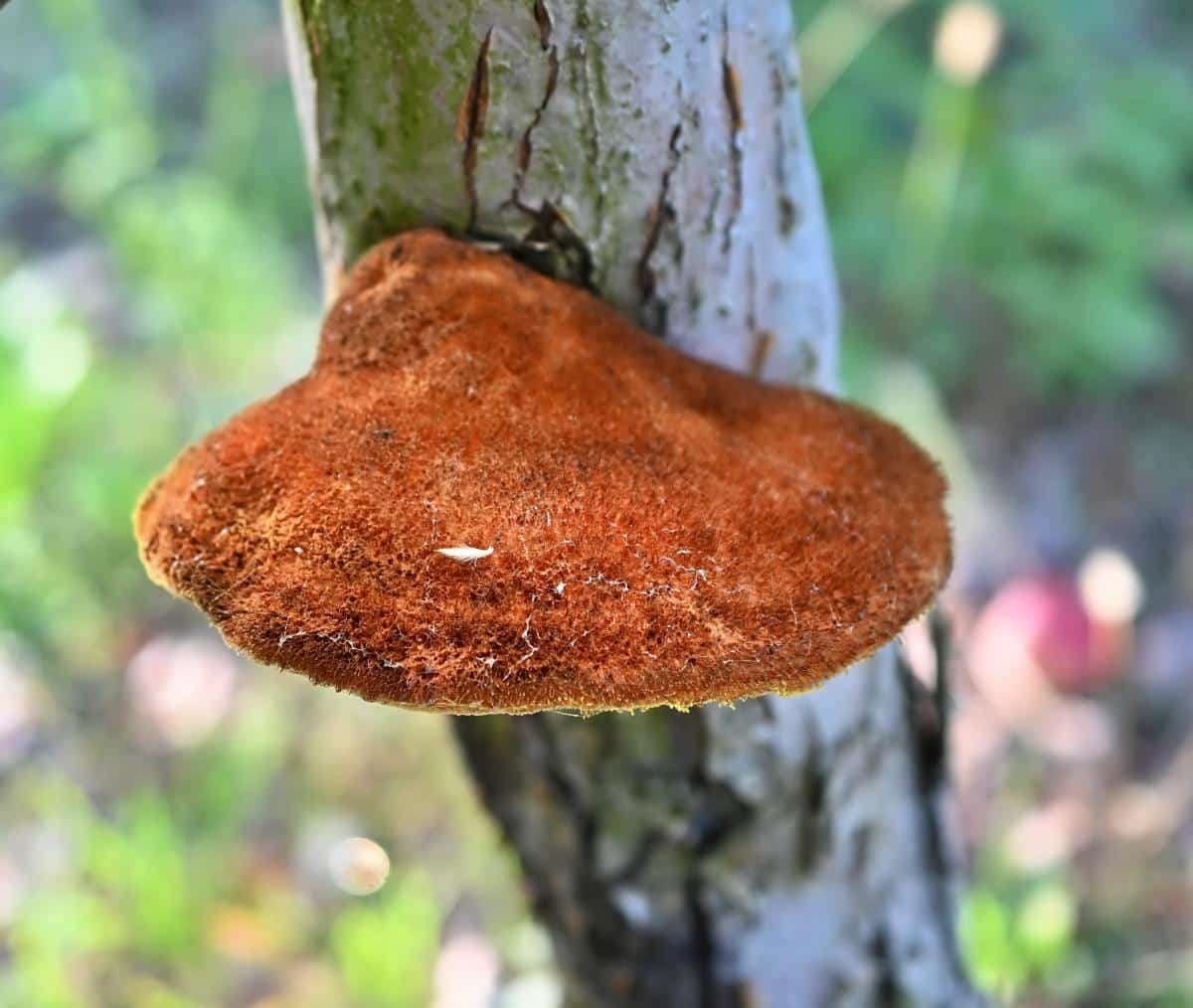
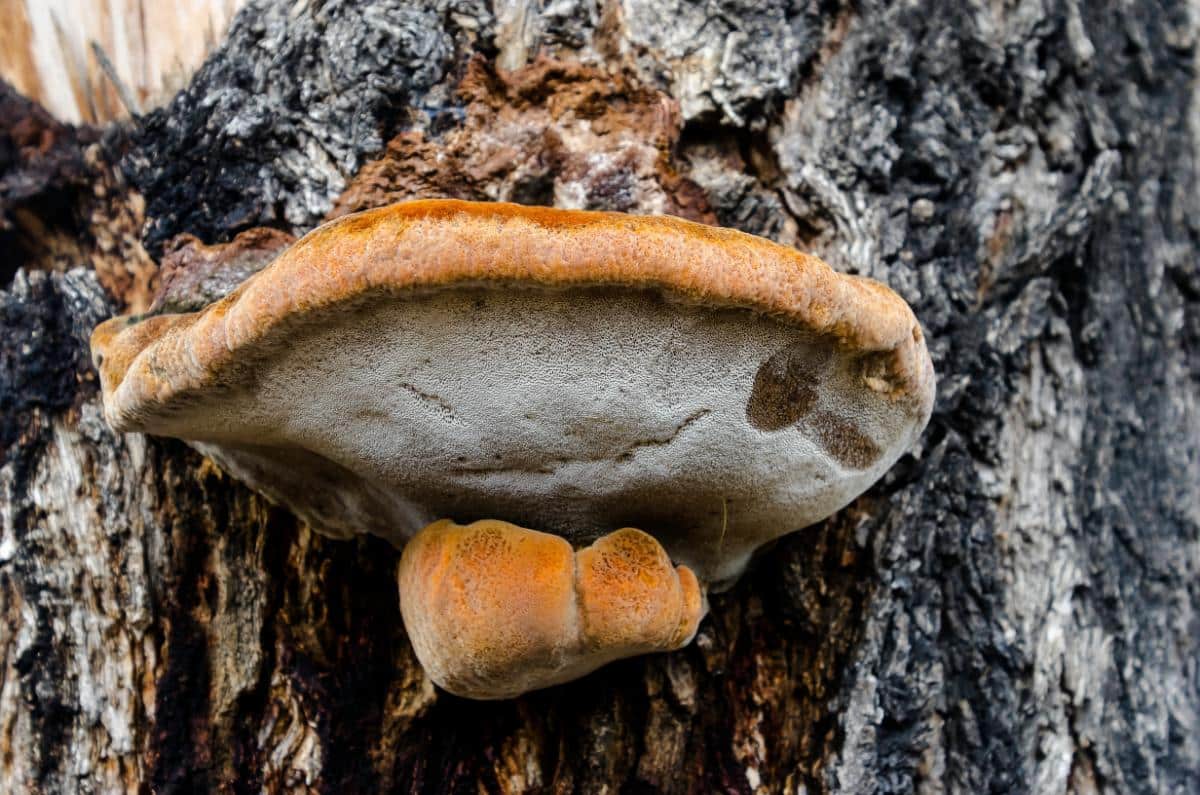
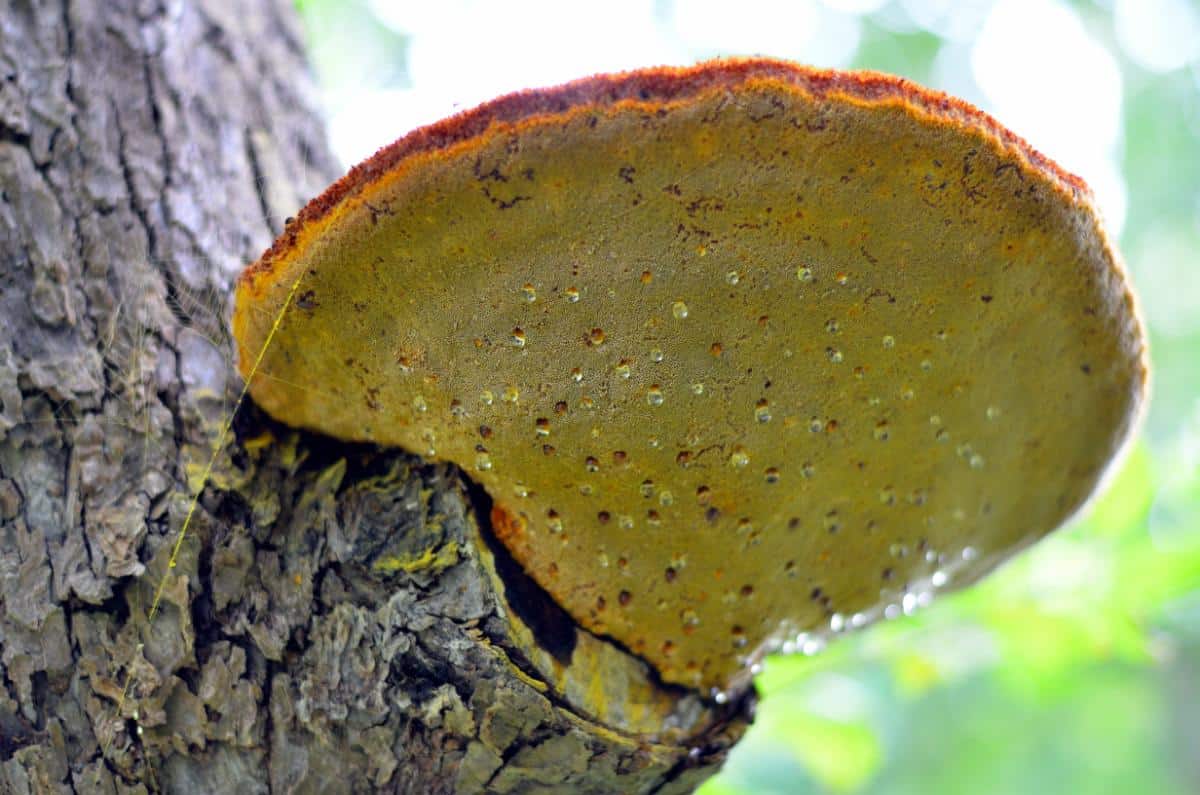
Shaggy Bracket Lookalikes
Hairy Bracket (Trametes hirsuta)
The hairy bracket is often confused with the shaggy bracket because of their very similar common names. However, it’s very easy to differentiate them. The hairy bracket (Trametes) is much, much smaller. Its brackets only grow up to 4 inches across and 2.4 inches deep, and they are whitish with orange-red or brown concentric zones of color.
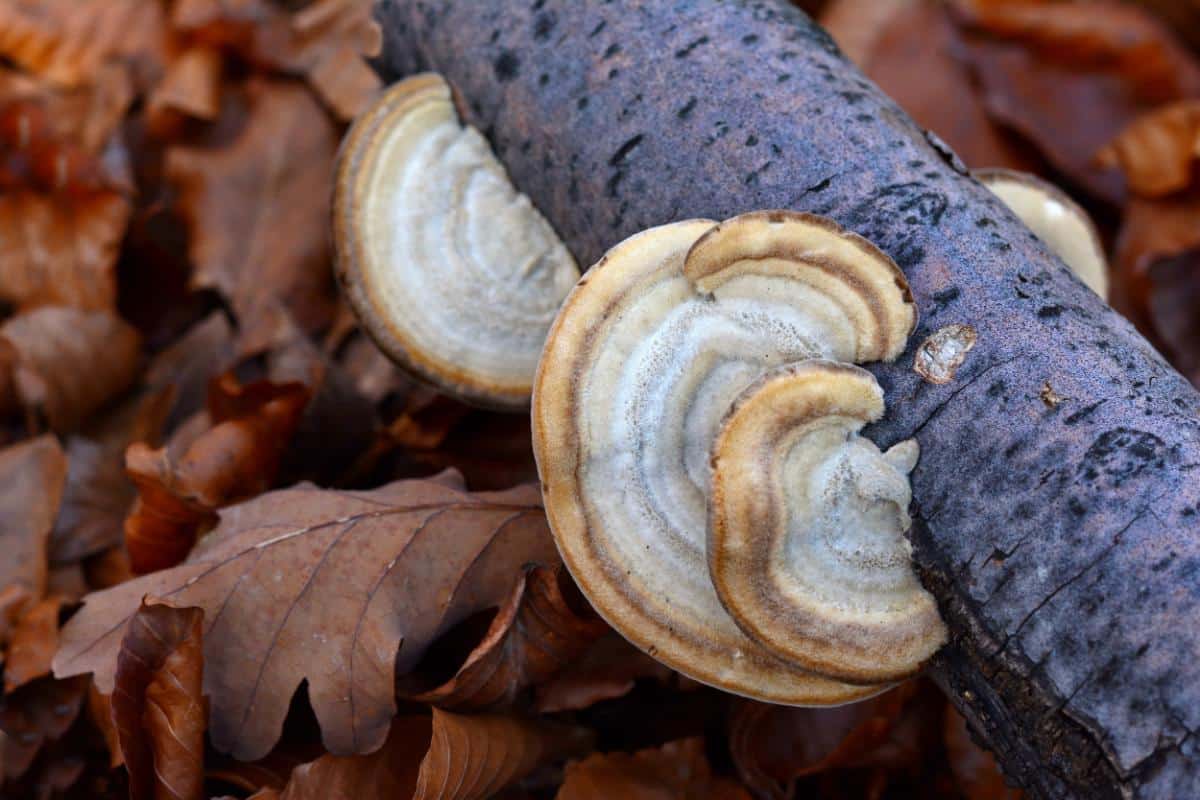
Beefsteak Fungus (Fistulina hepatica)
The beefsteak mushroom causes the most confusion, especially with young shaggy brackets. Both have a reddish color and puffy, polypore bracket shape. However, the beefsteak fungus isn’t hairy at all. The beefsteak’s fruitbodies also feel softer and release red juice when cut. Its flesh is more translucent and eerily resembles meat tissue.
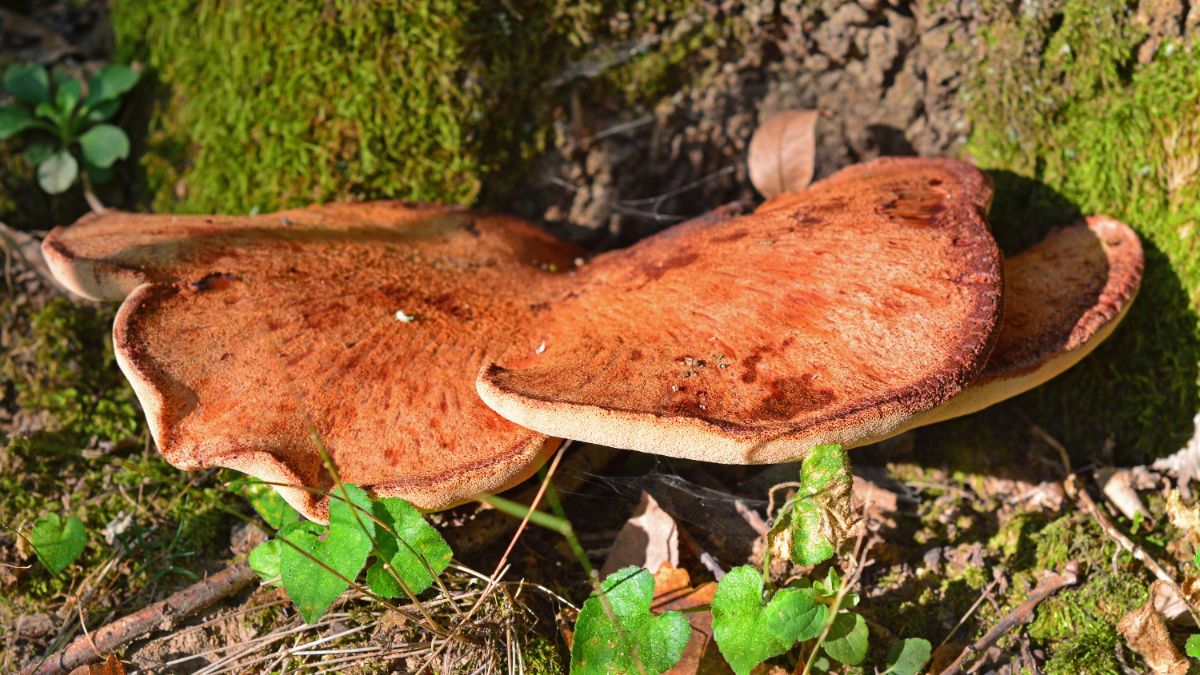
Chaga (Inonotus obliquus)
Older shaggy brackets often get confused with Chaga. These fungi can look remarkably alike, but you can tell them apart by their host trees and they way they grow. Chaga grows on birch trees in cooler climates. And the inside of chaga is reddish-brown color, dense, and hard. Chaga also doesn’t grow in defined brackets.
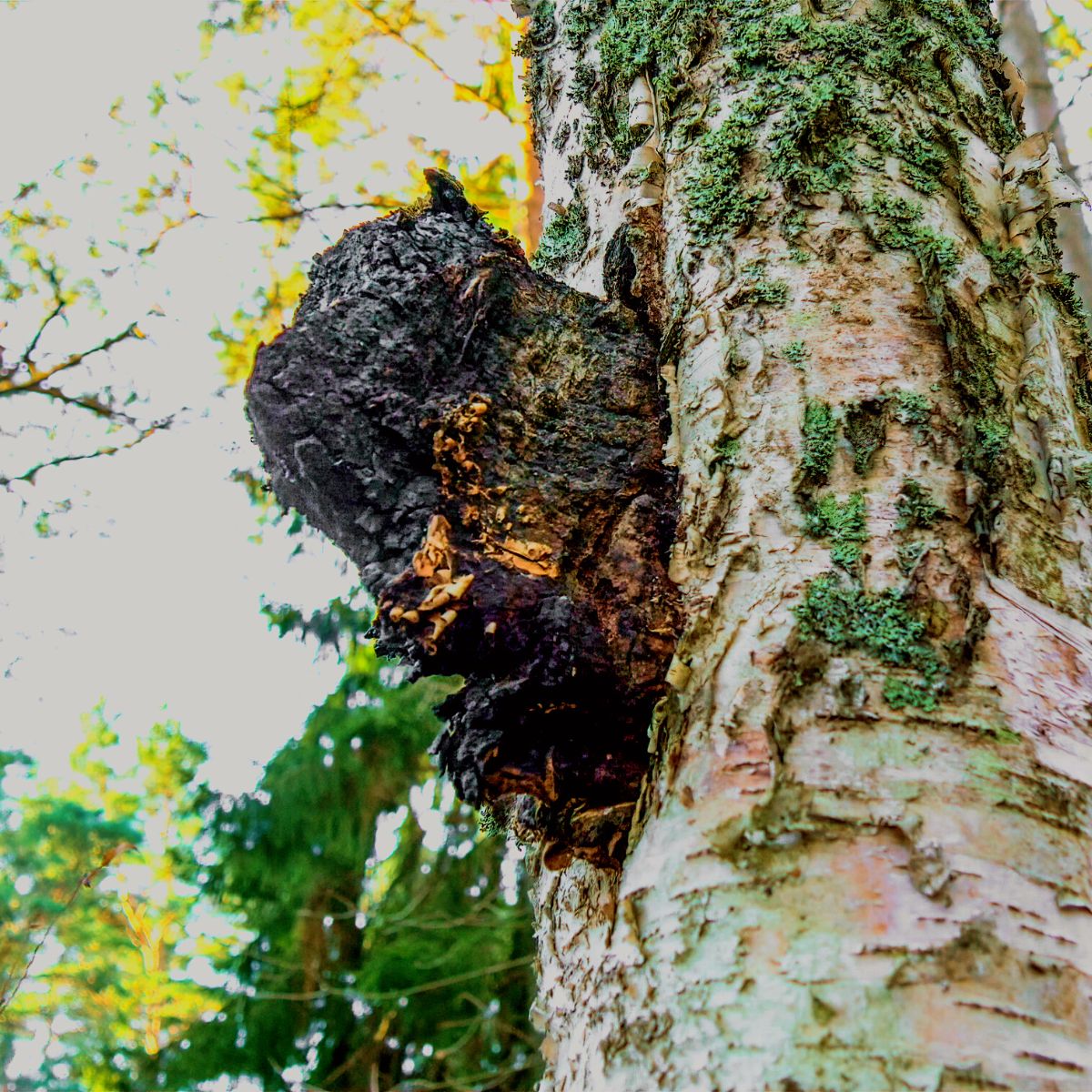
Oak polypore (Pseudoinontus dryadeus)
The oak polypore is in the shaggy bracket’s family, which makes identification tricky. It bleeds yellow droplets when young, like the shaggy bracket. It is much lighter colored, though, and is not overtly hairy. When young, the oak polypore is slightly velvety, but with age the brackets quickly become smooth.

Dyer’s Polypore (Phaeolus schweinitzii)
A dried fruiting body of Dyer’s polypore might look like the shaggy bracket. Both of these polypores have very dark colored caps. The dyer’s polypore has distinctive yellowish edges, though, when young, which easily sets it apart. However, as the mushroom ages, the yellow edges turn dark and it’s not uncommon for them to disappear altogether.
The biggest difference is the host preference. The Dyer’s polypore parasitizes conifer roots rather than broadleaved trees.
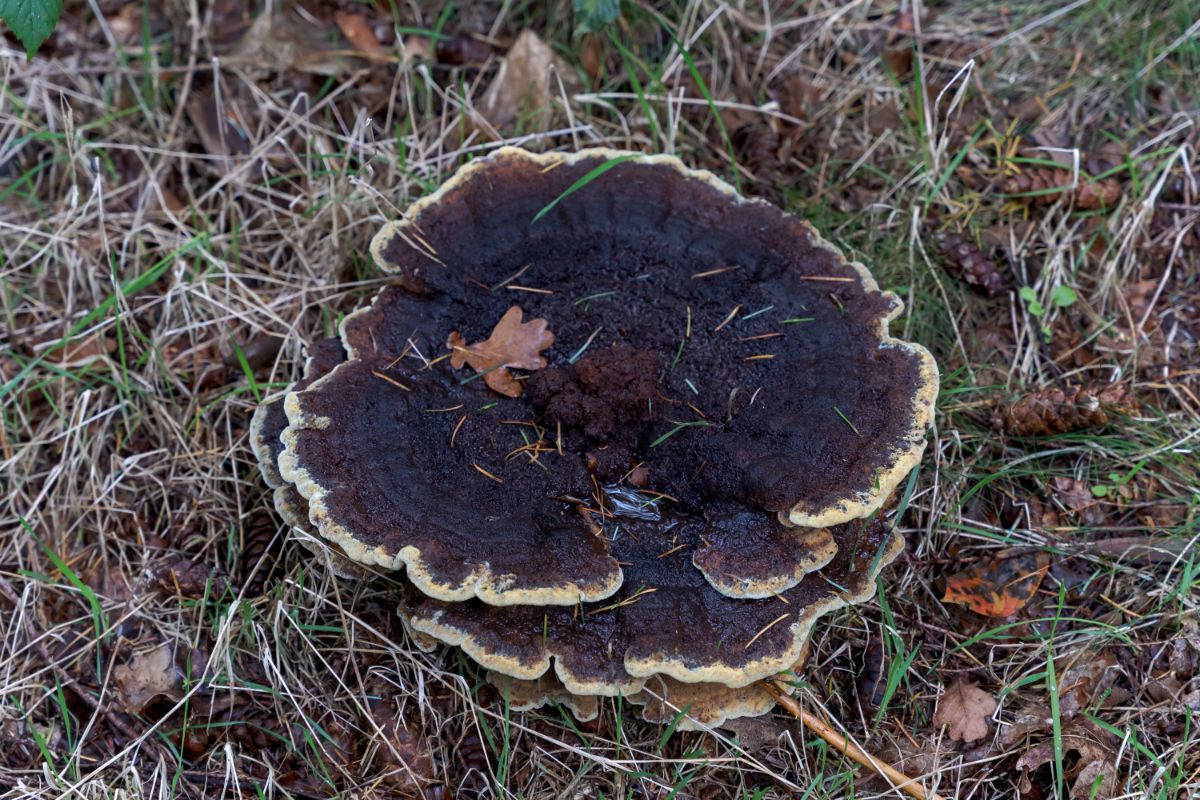
Inonotus quercustris
Inonotus quercustris resembles the shaggy bracket mushroom in basic form and function. It has a limited distribution, though, and is more common in southern regions. It has the same orangish to reddish-brown coloration, but it typically has more defined zones when mature and is more frequently found on oak species. Both species cause significant decay in living trees.
Resinous Polypore (Ischnoderma resinosum)
The resinous polypore forms brackets 3-10 inches across with a velvety dark red/brown surface that develops zones and darkens with age. This coloring is similar to the shaggy bracket, but the shaggy bracket doesn’t have zonal coloring. The young resinous polypore specimens are soft and squishy with whitish, pink, and brown colors. When they mature, though, they become leathery and tougher.

White Chicken of the Woods (Laetiporus persicinus)
The white chicken mushroom is a medium to very large fleshy polypore that can grow up to 12 inches across. It looks somewhat like the shaggy bracket because it also forms brackets on the side of trees. The white chicken mushroom is light orange-brown though and rather muted in color.
This is quite different from the shaggy bracket mushroom’s dark orange-red coloring. Another difference is that this chicken of the woods has white pores that immediately stain dark brown when touched. It also typically grows on dead trees and logs rather than living hosts.
Medicinal Uses For Shaggy Bracket Mushroom
People across Asia and Europe have used the shaggy bracket mushroom for centuries to treat digestive issues and internal health problems.
In Chinese medicine, it’s been a cancer treatment for generations. Modern science is now proving the actuality of this through research. Lab tests show that both wild and grown specimens can fight breast cancer cells effectively.
Scientists have found about 30 bioactive compounds in this mushroom. These include 21 polyphenols and nine fatty acids. Five specific polyphenols (osmundacetone, isohispidin, inotilone, hispolon, and inonotusin A) work through 11 different ways to fight tumors.
Studies also show that the shaggy bracket mushroom helps reduce blood sugar levels. This could make it very useful for managing diabetes. This matches perfectly with how people in China have used it traditionally to treat diabetes, gout, and arthritis.
Research also shows that extracts of this mushroom can boost our immune system by controlling T-cell growth and improving natural killer cell function. Research also points to its antioxidant, antimicrobial, and anti-inflammatory benefits.
- The antitumor effect of mycelia extract of the medicinal macrofungus Inonotus hispidus on HeLa cells via the mitochondrial-mediated pathway
- Diverse Metabolites and Pharmacological Effects from the Basidiomycetes Inonotus hispidus
- A comparative study of the antimicrobial and antioxidant activities of Inonotus hispidus fruit and their mycelia extracts
- The regular pattern of metabolite changes in mushroom Inonotus hispidus in different growth periods and exploration of their indicator compounds
- Anti-tumour Effect and Pharmacokinetics of an Active Ingredient Isolated from Inonotus hispidus
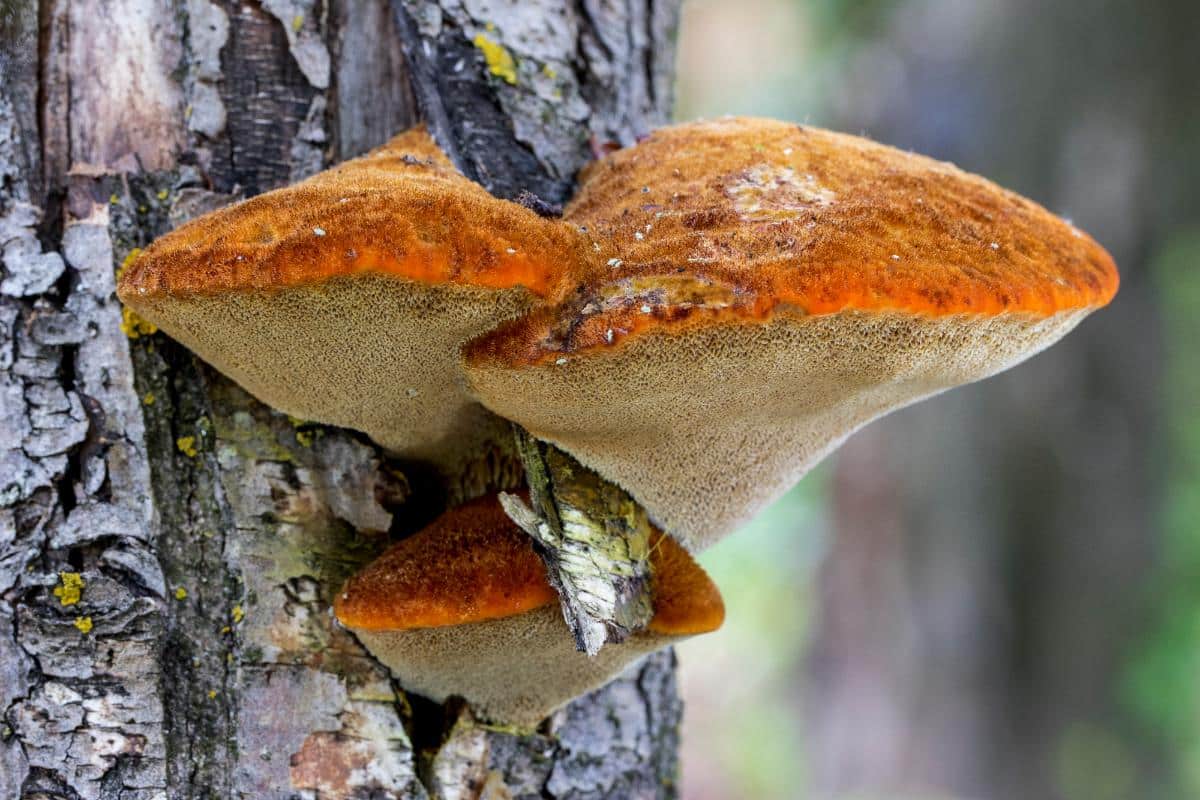
Common Questions About The Shaggy Bracket Mushroom
Is the shaggy bracket mushroom edible?
No, the shaggy bracket mushroom is not edible. While it’s not poisonous, its extremely tough and leathery texture makes it inedible. It’s more valuable for its medicinal properties and traditional uses rather than as a food source.
What are the medicinal uses of shaggy bracket mushrooms?
Shaggy bracket mushrooms have been used in traditional medicine for treating digestive disorders and internal ailments. Recent research suggests potential anti-cancer properties, particularly against breast cancer cells. They may also help manage diabetes and have shown antioxidant, antimicrobial, and anti-inflammatory capabilities.
How long does a shaggy bracket mushroom live?
Shaggy bracket mushrooms typically appear from late spring through autumn. Once they develop, the fruiting bodies can persist year-round, although they become dry and deteriorate over time.

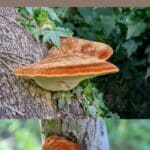
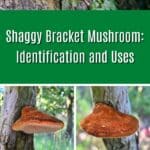
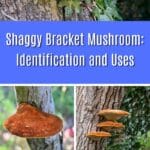
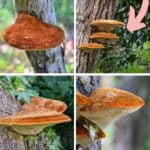
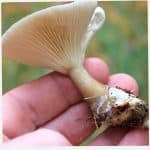



Frances Kelly says
I found a lovely quantity of Shaggy Brackett mushrooms right around the corner. They are so beautiful. I love the facts that they are being used in targeting cancer cells, immunotherapy, and my question to you is how would I extract the essential nutrients from the mushroom and what technique and lab equipment would be used? I’m picking these mushrooms tonight. I’m very excited to see them, but I need to know what to do next. I understand they can’t be eaten. How can I dry them natuarally?
Jenny says
I’m no scientist, but for most mushrooms like this you’d do a tincture – here’s some ideas on tinctures. Whether that’s the best process for this particular species, I don’t know. Maybe you can find in the research the method the researchers used https://www.mushroom-appreciation.com/ganoderma-extract.html